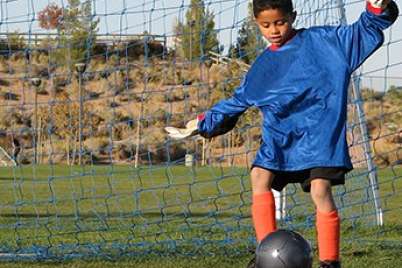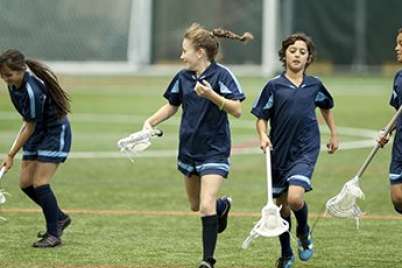
Rethinking school sports teams: here’s a way every kid gets to play
There’s an excitement in the air every time we tell students there’s an upcoming sports tournament. The schoolyard is filled with students in grades four to six practicing during recess to get ready for the tryouts.
Typically, there are over 60 students trying out for one team. Most elementary school teams have 15 players on them. If you do the math, that’s a lot of disappointed students once the team has been chosen.
There’s a ripple effect in the schoolyard. I notice many students who don’t make the team stop playing that sport during recess. I see less basketball and soccer being played after tryouts than before.
I once took a year off from coaching sports teams at my school. It was then that I was finally able to notice how my students reacted to being cut from a team.
At the time, I was a Grade 5 teacher. Usually I’d be going to the tournament, coaching the 15 students who made the team. Now I was with the ones who were left behind. Some of them could easily move on. Others were visibly affected by the rejection.
Something had to be done.
In 2013, I started an intramural program for the grades four to six students. Students had the opportunity to play a variety of sports in a safe, inclusive, and positive environment.
We started seeing new faces. Some students who’d never tried out for sports before started showing up to play. It turned out they enjoyed playing sports in a recreational environment. Once the intramurals were done, tryouts started. We had over 100 students during intramurals and about 60 for the tryouts.
But once the team was made, there was room for only 15 students to play—a huge drop from the 100 who had been engaged. Clearly, the intramurals program was a great way to get many students participating, but we had to tweak it.
Last year, I decided to focus primarily on the intramural program. We still sent players to the tournaments, but we did the selection process differently.
When students showed up to the intramurals, they would let the coaches know if they wanted to try out for the sports team. All we did was play games for a month. At the end of the intramurals, we would choose 15 players, have a few practices, and then go to the tournament.
I also kept track of who made the teams. I told the students that by the end of Grade 6, every student who wanted to participate in a school tournament would have the chance to do so. In the end, 86 percent of Grade 6 students participated in a tournament.
I had a chat with the other 14 percent. Some of them didn’t want to participate and were happy only playing during the intramurals. Some said they preferred to only take part in the ski club. Others didn’t like the type of sports played during the tournaments.
I think this way of doing things made it a lot easier on the students. They knew right from the start that it wasn’t only going to be the most athletic students who’d make the teams.
The school setting is by default an inclusive environment. Therefore, our sports teams should be inclusive as well.






As always David you are being mindful of your students and ensuring they get a positive and enriching experience – thank you. We need more people in schools and sport like you!
Thank you for the kind comment, Drew!
Great initiative. Not just limited to sports teams. Physical activity takes many forms and branches to new passion. Swim lessons promote water skills and safety and branch off to racing, triathlon, sailing, kayaking, etc.
Great job…wonderful leadership – Bravo!
Thank you so much! All of our kids deserves a chance at playing.